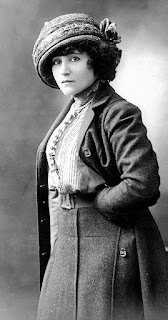Amanda McCabe's Blog, page 14
May 2, 2022
House of Worth

One of my favorite things about writing historicals is—the clothes!!! The Wilkins sisters of “The Dollar Duchesses” series (especially beautiful Rose!), as American heiresses, could afford any of the finest gowns of the day. But of course she would first go to Worth, as everyone of the day did! A lady simply had be dressed by The House of Worth, especially ladies with a mother like Mrs. Wilkins, determined to wed her beautiful daughters to English nobility. Rose, as the most stylish lady in London Society, often wears his gorgeous gowns—and hopefully her estranged (but still deeply loving) husband Jamie notices...
Charles Frederick Worth, the designer who dominated Parisian fashion in the latter half of the nineteenth century, was born in Bourne, Lincolnshire, England, on October 13, 1825. As a young man, Worth worked as an apprentice and clerk for two London textile merchants. In addition to gaining a thorough knowledge of fabrics and the business of supplying dressmakers during this time, he also visited the National Gallery and other collections to study historical images for inspiration in his romantic style of design
Worth relocated to Paris in 1845. Despite early struggles, he found work with Gagelin, a prominent firm that sold textile goods, shawls, and some ready-made garments. Worth became Gagelin’s leading salesman and eventually opened a small dressmaking department for the company, his first position as a professional dressmaker. He contributed to the reputation of the firm with prize-winning designs displayed in the Great Exhibition in London (1851) and the Exposition Universelle in Paris (1855). Worth opened his own firm with a business partner in 1858.
Worth’s rise as a designer coincided with the establishment of the Second Empire in France. The restoration of a royal house in 1852, with Napoleon III (1808–1873) as the new emperor, once again made Paris an imperial capital and the setting for numerous state occasions. Napoleon III implemented a grand vision for both Paris and France, initiating changes and modernization that revitalized the French economy and made Paris into a showpiece of Europe. The demand for luxury goods, including textiles and fashionable dress, reached levels that had not been seen since before the French Revolution (1789–99). When Napoleon III married Empress Eugénie (1826–1920), her tastes set the style at court The empress’ patronage ensured Worth’s success as a popular dressmaker from the 1860s onward.

Worth’s designs are notable for his use of lavish fabrics and trimmings, his incorporation of elements of historic dress, and his attention to fit. While the designer still created one-of-a-kind pieces for his most important clients, he is especially known for preparing a variety of designs that were shown on live models at the House of Worth. Clients made their selections and had garments tailor-made in Worth’s workshop. This spread his fame far beyond the designers known only to those “in the known.”
The large number of surviving Worth garments in the permanent collection of The Costume Institute, as well as in other institutions in the United States, is testament to Worth’s immense popularity among wealthy American patrons, as well as European royalty and aristocrats. Many clients traveled to Paris to purchase entire wardrobes from the House of Worth. For the wealthy woman, a complete wardrobe would consist of morning, afternoon, and evening dresses , and lavish “undress” items such as tea gowns and nightgowns, which were worn only in the privacy of one’s home. Women also looked to Worth to supply gowns for special occasions, including weddings and ornate masquerade balls, a favorite entertainment in both the United States and Europe. Worth’s clients also included stars of the theater and concert stage. He supplied performance costumes and personal wardrobes for leading actresses and singers such as Sarah Bernhardt, Lillie Langtry, Nellie Melba, and Jenny Lind.

With his talent for design and promotion, Charles Frederick Worth built his design house into a huge business during the last quarter of the nineteenth century. His sons, Gaston-Lucien (1853–1924) and Jean-Philippe (1856–1926), took over their father’s business following his death in 1895 and succeeded in maintaining his high standards. Jean-Philippe’s designs in particular follow his father’s aesthetic, with his use of dramatic fabrics and lavish trimmings. The house flourished during the sons’ tenure and into the 1920s. The great fashion dynasty finally came to an end in 1952 when Charles Frederick Worth’s great-grandson, Jean-Charles (1881–1962), retired from the family business. Citation
Krick, Jessa. “Charles Frederick Worth (1825–1895) and the House of Worth.”
“The House of Worth: Portrait of an Archive”
May 1, 2022
Fun Weekend Links
(fun things to read, a little late this weekend!)
Gilded Age Gem Mansion For Sale In NYC
These Green Books Are Poisonous!
Setting The Stage In The Gilded Age
The Story Behind Downton Bride's Art Deco Veil
April 2, 2022
Fun Weekend Links
Anton Chekov's Beloved Summer Home In Ukraine Is Under Threat
How To Set Up A Bar Cart Like A Pro
On Jane Austen's Use Of Food As A Character
A Bookstore Revival Taps Nostalgia For Mall Heyday
How To Pair Wine And Cheese Like An Expert
How Much It Would Really Cost To Live Like Mrs. Maisel
March 21, 2022
Coming Soon!
Coming Soon! The last book in my "Dollar Duchesses" series, the tales of 3 American heiress sisters who marry English dukes. I loved writing this one, especially getting to virtually visit Venice whil during lockdown...

Escape to beautiful Venice for this Victorian marriage reunited story…
An invitation to Venice…
To save their marriage!
Suggesting divorce to her estranged husband, Jamie, Duke of Byson, takes all of Rose Wilkins’s courage. Years of distance and heartbreak have taken a toll—she needs a new start. But Jamie won’t hear of divorce, because of the scandal alone. His counteroffer is a trip to Venice… Might discovering Venice’s delights together rekindle the still-simmering desire that drew Rose to Jamie as a starry-eyed young American heiress?
March 20, 2022
Fun Weekend Links
Benefit Ukraine Auction (I have items up for auction here!)
Vintage Wedding Gowns Are More Popular Than Ever
Historical Novels Inspired By Real-Life Women
14th Century Sarcophagus Found at Notre Dame
Why We Still Love William Morris
All Creatures Great And Small's James Herriott Is A Real Romantic Hero
The Suffragette Who Turned Society Ladies Into Greek Goddesses
How "Vikings Valhalla Actor Leo Suter Turned Into A Warrior (I am obsessed with this show right now!!!)
February 16, 2022
Wedding Gown Wednesday



January 29, 2022
Heroine of the Weekend: Colette

This weekend's heroine is the writer Colette, born on January 28, 1873!
Born in the Burgundy village of Saint-Saveur-en-Puisaye to a war hero father and his wife, the family was orginally prosperous but suffered finanical reversals. She married in 1893 to Henri Gauthier-Villars ("Willy"), a writer and publisher 14 years her senior. Her first 4 books (the "Claudine" titles) were published under his name and copywright. When they separated in 1906 (and later divorced in 1910), she had no income from her own writings. She worked in journalism and on the music hall stage, as well as practicing as an amateur photographer. She also had relationships with several women, including the famous Natalie Barney, as she continued her writing.
In 1912, she married Henri de Jouvenal, and in 1913 had her daughter ('Bel-Gazou"). She published her very popular (and scandalous!) Cheri in 1920, and her writing career took off quickly. She was divorced again in 1924, and in 1925 married Maurice Goudeket, who was her husband for the rest of her life.
The 1920s and '30s were very productive for her work, and she was acclaimed as France's greatest female writer. She was 67 when the Germans occupied France, and she stayed in her Paris apartment on the Palais-Royal despite the arrest of her Jewish husband in 1941 (he was quickly released, and they spent the rest of the war quietly). In 1944, she wrote her most famous work, Gigi. Postwar, she was famous but ill with arthritis, nursed by her husband, and continued to write. (She was nominated for the Nobel Prize in literature in 1948). When she died on August 3, 1954, she was the first French woman of letters to receive a state funeral, and was buried in Pere Lachaise.
A couple of sources for her fascinating life:
Judith Thompson, Secrets of the Flesh: A Life of Colette (1999)
Annie Goetzinger, The Provocative Colette (2018)
January 28, 2022
January 27, 2022
Pre Order Sale
Barnes & Noble is having a pre-prder sale through the 28th! You can use it for "Winning Back His Duchess," if you feel so inclined 😀

January 25, 2022
Burns Night

No haggis here, but there may be a wee dram later!
O my Luve is like a red, red rose
That���s newly sprung in June;
O my Luve is like the melody
That���s sweetly played in tune.
So fair art thou, my bonnie lass,
So deep in luve am I;
And I will luve thee still, my dear,
Till a��� the seas gang dry.
Till a��� the seas gang dry, my dear,
And the rocks melt wi��� the sun;
I will love thee still, my dear,
While the sands o��� life shall run.
And fare thee weel, my only luve!
And fare thee weel awhile!
And I will come again, my luve, Though it were ten thousand mile.




